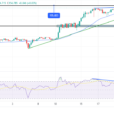When discussing yesterday’s WSJ report that the Trump admin may slap the new, $200 billion round of tariffs on Chinese imports as soon as tomorrow, we said that such an escalation would likely derail talks with top Chinese officials, currently scheduled in Washington for Sept. 27 and Sept. 28. Now, in a follow up report, the WSJ has confirmed that in light of the Trump’s imminent announcement, China is considering declining Trump’s offer of trade talks later this month as Trump’s “pressure tactics” aren’t “sitting well” with Beijing, which has repeatedly said it wouldn’t negotiate under threat.
“There is a lot of uncertainty right now,” a Chinese official told the WSJ. “If more tariffs come out, the Chinese side could very well choose not to go.” That said, a final decision has not yet been made on the trips, and will depend on what Trump does in the coming days.
Underscoring China’s growing anger toward Trump’s negotiating tactics, Yang Weimin, a former senior economic adviser to President Xi Jinping, said on Sunday that “China never said it doesn’t want to negotiate with the U.S…. But the U.S. side has to show sincerity” toward resolving the trade dispute. Added a current senior official who advises the leadership on foreign-policy matters: “China is not going to negotiate with a gun pointed to its head.”
While China’s lack of desire to negotiate would hardly come as a surprise – after all there will be little to discuss if Trump does pull the trigger on even more tariffs – what may come as a shock to US businesses is how China plans to retaliate to the $200 billion in new tariffs.
Yesterday, we noted that Beijing could prompt respond “qualitatively” by selectively targeting US companies which have a major presence in China, such as US auto makers or Apple. It now appears that China’s escalation will be even more targeted, and that some Chinese officials involved in advising the leadership are proposing to step up the trade fight a notch by restricting China’s sales of materials, equipment and other parts key to U.S. manufacturers’ supply chain.












Leave A Comment